In today’s classrooms, educational games are a powerful tool. They capture students’ attention and make learning fun. These games turn learning into an interactive adventure, helping students stay focused and engaged.
They also help students develop important skills. This article will look at seven educational games that make learning both enjoyable and effective.
Key Takeaways
- Educational games can improve student focus, engagement, and skill development.
- These games present educational content in a interactive and engaging way.
- Exploring a variety of educational games can help create a dynamic and enriching learning environment.
- Games can foster collaboration, problem-solving, and creativity among students.
- Incorporating educational games into the curriculum can lead to better learning outcomes.
Introduction to Educational Games
The world of education is always changing. One big change is the rise of educational games. These games make learning fun and interactive. They can change how students learn and remember things.
The Importance of Educational Games is huge. They can make learning exciting and new. This is a big step forward in how we learn1.
The Power of Play in Learning
All kids love to play. We can use this love to make learning better. Advantages of Games in Classroom settings are many. They make learning fun and help students focus better1.
Games also make learning interactive. They help students connect with each other. This makes learning a team effort1.
Benefits of Incorporating Games in the Classroom
Adding games to lessons helps students a lot2. Games make students more motivated and engaged. They are better than old ways of learning2.
Games make students think and solve problems. This improves their thinking skills2. They also offer learning that fits each student’s pace and style. This helps students work together better2.
Games are successful because they involve students actively. They find old ways of learning boring1. Games have been used to teach for centuries. Even back in the Middle Ages, noblemen learned war strategies through chess1.
Today, games use new tech like AR and VR. This makes learning even better. The gaming world also helps solve big problems through games2.
In short, educational games are very important. They make learning fun and effective. By using games, we can make learning better for everyone2.
Math Games
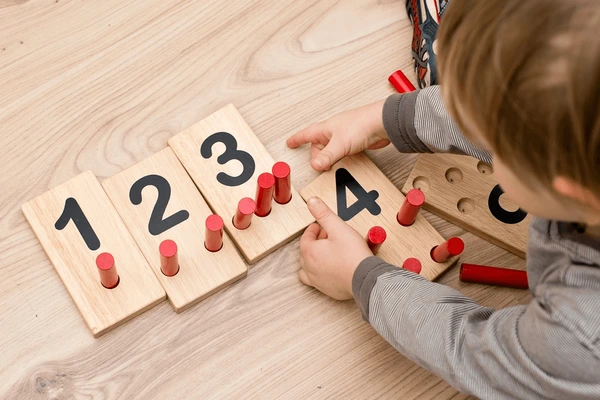
Students often need lots of practice to master new math concepts3. Math games can make this practice fun and effective, helping build problem-solving skills3. Prodigy Math is an online RPG that turns math into an adventure. Students’ success depends on answering math questions that match the curriculum4.
Prodigy Math: An Engaging RPG for Math Practice
Prodigy’s adaptive algorithm adjusts questions to fit each student’s learning needs, making math class enjoyable4. This game-based learning platform is loved by both students and teachers4. Teachers have seen students improve by two to three grade levels in a year4.
Prodigy offers math games for grades 1-8 and English games for grades 1-64. Teachers can track student progress and align Prodigy with their lesson plans4. The platform’s content meets standards like Common Core and state-specific standards4, ensuring students learn essential skills in a fun way.
Nearly one million teachers use Prodigy in the classroom for free4. This makes it a valuable resource for educators who want to make learning fun and effective4. With optional parent memberships offering extra features4, Prodigy remains a free and engaging way for students to improve their math skills.
Spelling and Vocabulary Games
Engaging5 your students in spelling and vocabulary games can change the classroom. Games like Hangman, Bananagrams, and Pictionary make learning fun and interactive6. They promote teamwork, creativity, and friendly competition while reinforcing language arts.
For young students, SpellingCity offers many spelling games and activities for different grade levels6. It has free games with clear pronunciation to help students get better at spelling and recognizing words6.
Older students can also enjoy these games. Boggle is a great game for practicing spelling and learning new words7. Word Match is similar to a memory game and has different spelling levels for all learners7.
Platforms like SplashLearn and Funbrain have colorful games and fun challenges to keep kids motivated7. These games help improve skills like phonics and visual processing, boosting confidence and encouraging friendly competition7.
By using a variety of spelling and vocabulary games, you can make learning fun and effective5. Whether you use classic board games or digital platforms, the goal is to make learning enjoyable for all students.
Active Games for the Classroom
Students with lots of energy or who can’t sit still need active games. These Active Classroom Games make learning fun by getting students moving. Scavenger hunts have students searching for hidden items or facts. This game is both fun and educational.
Freeze dance is another great game. Students dance until the music stops and then freeze. It’s a quick way to get everyone moving and focused.
Scavenger Hunts: Exploring and Learning
Scavenger hunts are great for all ages. Students can search for classroom objects or gather information. It’s a fun way to learn by exploring and using what they know.
The competition in scavenger hunts makes it exciting. It encourages students to dive into learning with enthusiasm8.
Freeze Dance: A Fun Brain Break
Freeze dance is a classic game that’s perfect for a classroom break. Students dance when the music plays and freeze when it stops. It’s a fun way to get moving and improve focus.
Freeze dance is great for re-energizing the classroom. It helps students refocus for the next activity8.
| Active Game | Grade Levels |
|---|---|
| Scavenger Hunt | Suitable for all age groups |
| Freeze Dance | Best for students in kindergarten to 3rd grade |
| GoNoodle Activities | Designed for students from kindergarten to 5th grade |
| Yoga Sessions | Beneficial for students of all ages |
| Minute to Win It Games | Most engaging for students in 4th grade and up |
By using these Active Classroom Games, teachers can make learning fun and engaging. These games help students release energy, improve focus, and learn important skills. Whether it’s a scavenger hunt or a quick freeze dance, these activities are sure to energize and inspire students all day long.
Educational Games
Kahoot is changing the game in educational technology. It makes learning fun with interactive quizzes and discussions. Teachers can use it to engage students of all ages9.
Kahoot: Gamifying Learning
Kahoot is easy to use and works for many subjects. Students can play on any device, learning together and competing. This makes learning a fun, social experience10.
It boosts student interest and motivation. Kahoot turns lessons into games, tapping into our love for play and competition. This makes learning both enjoyable and effective10.
Kahoot is simple for teachers to use, no matter their tech skills. They can make their own games or pick from a huge library. This makes it easy to fit Kahoot into any classroom9.
Kahoot is leading the way in making learning more engaging. It uses technology and our love for play to change education. This prepares students to succeed in today’s world10.
Creativity and Expression Games

Creativity Express Online is a standout in educational games. It boosts self-expression and creativity in kids. This platform lets students show their artistic side and solve problems through fun activities. Creativity Express Online helps kids use their creativity, share their work, and get feedback. This sharpens their critical thinking skills11.
The game offers a wide range of art games, coloring, and drawing challenges. It has over 30 activities12. Creativity Express Online helps kids improve their fine motor skills, tech skills, and love for the arts. Kids also learn empathy and kindness through pet-caring games12.
Research shows creative games are key for kids’ growth13. They boost social skills, emotional smarts, and thinking abilities. Creativity Express Online helps kids become confident, creative problem-solvers and well-rounded individuals13.
Nurturing Creativity and Self-Expression
Creativity Express Online lets kids explore their artistic side. They try different media and share their work. This sparks their imagination and helps them improve their skills and build confidence12.
Playing Creativity Express Online helps kids grow their artistic skills. They also learn important life skills like problem-solving and emotional smarts13. The game encourages teamwork and feedback, improving social skills and empathy13.
Adding Creativity Express Online to school or home learning is a great idea. It opens up new possibilities for kids. This platform is a powerful tool for nurturing creativity and self-expression, preparing kids for a future that values innovation11.
STEM and Coding Games
Minecraft: Education Edition for Coding and More
Explore the world of STEM Games and Coding Games with Minecraft: Education Edition. It’s a special version of Minecraft made for classrooms. Students can learn about math, science, history, and coding in a fun way14.
This version has lots of lesson plans and tutorials. Teachers can easily add it to their classes. Students can learn coding by making their own games in Minecraft15.
Minecraft: Education Edition also lets students work together. They can solve problems and create projects as a team. This helps them learn important skills like teamwork and problem-solving16.
Looking for a way to make learning fun? Minecraft: Education Edition is perfect. It’s great for coding, science, and history. Watch your students grow and explore in this exciting virtual world14.
Geography and Culture Games
Explore the world’s wonders with National Geographic Kids. This game is an interactive journey around the globe. This game uses play to spark a love for geography and culture17.
National Geographic Kids has many activities for different learning styles. Kids can play bean bag tosses to find countries on a map17. They can also play memory games to match states with their capitals17. It’s fun and educational, capturing young minds17.
The game takes players to far-off lands, diving into the world’s cultures. National Geographic Kids lets users explore continents and countries18. It helps kids appreciate the diversity of our world18.
There are activities like identifying geographic regions and capitals18. Learning is an adventure for kids of all ages18. Whether you’re 10 or 85, National Geographic Kids is exciting18.
Start a journey of discovery with National Geographic Kids. It combines Geography Games, Cultural Games, and the National Geographic Kids brand. Together, they unlock the world’s secrets, one game at a time1718.
Exploring Cultures
National Geographic Kids takes kids from New York to Africa, exploring cultures19. It has games for all ages, making learning fun and meaningful19.
Kids can learn capitals, navigate rivers and roads, and collect memories19. The game’s features help kids appreciate cultures and geography19.
National Geographic Kids makes learning exciting. It sparks a lifelong love for Geography Games and Cultural Games171819.
Social and Emotional Learning Games
Schools are getting more diverse, and teachers are focusing on Social and Emotional Learning (SEL). They want students to do well in school and life20. Adding just one SEL activity to a lesson can really help a child20. Games that teach empathy, sharing, and kindness are great for schools20.
These games help students learn important skills like recognizing and managing feelings. Games like emotion charades, expression mimicking games, and the step-into-conversation card game are great for building life skills20. Studies show that being thankful makes kids happier before they turn five20. Also, stress affects 77% of people, hurting their health20.
- Celebrating diversity is key today, with schools encouraging students to share their stories20.
- Meditation helps students connect with their community and themselves20.
- Pairing high school students with younger kids as mentors teaches responsibility and care20.
- Interview projects improve communication and cultural understanding20.
- Writing from another’s perspective boosts empathy and understanding20.
Positive Actions offers teachers tools to add SEL to their classrooms20. There are many Social-Emotional Learning Games and SEL Activities to meet different student needs21.
Using these fun educational games, schools can help students grow socially and emotionally. This helps them succeed in school and life21.
Educational Apps and Platforms
There are many22 fun and interactive Educational Apps and platforms for students. GoNoodle is one example. It offers videos and games that boost physical activity and active learning. These apps help teachers keep students engaged and active.
GoNoodle: Engaging Activities for Active Learning
GoNoodle is a top choice for educational apps and activities23. It has thousands of videos, games, and mindfulness exercises. These cover subjects like math, science, and social-emotional learning.
Teachers can use GoNoodle to make learning fun and active. This helps students stay focused and energized all day.
“GoNoodle’s interactive activities help students stay engaged and active, ultimately enhancing their learning experience.”
GoNoodle also makes teaching easier for teachers. It has tools to track student progress and adjust teaching strategies22. It also works well with Google Classroom and other systems.
Using Educational Apps like GoNoodle makes learning more fun and interactive. Active learning strategies improve grades, social skills, and well-being.
Educational Apps and platforms like GoNoodle are great for teachers and students. They make learning fun and effective. By using these tools, teachers can create a dynamic and engaging classroom.
Collaborative and Team-Building Games
Teaching teamwork is key for students’ success in school and life. Collaborative games help students improve communication, problem-solving, and creativity24. These games make students work together, building a strong classroom community25.
There are many Collaborative Games and Team-Building Games to pick from24. They fit different group sizes and skill levels, making them fun for everyone25. Activities like building a spaghetti tower or debating teach students to communicate and work together.
| Team Building Activity | Group Size | Duration | Skills Developed |
|---|---|---|---|
| Marshmallow Tower Challenge | 4-6 students | 15-20 minutes | Problem-solving, communication, creativity |
| Debate Challenge | 8-12 students | 30-45 minutes | Critical thinking, public speaking, teamwork |
| Outdoor Scavenger Hunt | 10-20 students | 45-60 minutes | Collaboration, leadership, observation |
Using Collaborative Games and Team-Building Games in class makes learning fun and supportive2425. It prepares students for the modern workforce.
“Teamwork is the ability to work together toward a common vision. It is the fuel that allows common people to attain uncommon results.”
– Andrew Carnegie
Enhancing Collaboration and Teamwork
Collaborative games and team-building activities are great for teaching students important skills2425. They help students communicate, listen, and achieve goals together. This prepares them for success in school and the workplace.
Adaptability and Problem-Solving Games
In today’s changing world, games that boost creativity and adaptability are key. Little Alchemy 2 is a game that teaches chemistry by mixing elements. Games like this help students think critically and solve problems26.
Games are great for teaching social skills, and flexibility and adaptability games are no exception. They help students tackle new challenges and find creative solutions26. For example, the “Obstacle Course” game gets harder as you go, while “Improv Challenge” boosts spontaneous thinking26.
Playing problem-solving games regularly boosts skills like recognizing patterns and making decisions27. These games challenge the brain, improving memory and cognitive strength27.
Games like CityHUNT Scavenger Hunt and Egg Drop challenge teams to think critically and work together28. Virtual team-building activities also help improve problem-solving and teamwork in remote work28.
By making time for games, educators can boost learning and adaptability26. Talking about problem-solving strategies after playing games makes learning even better26.
In summary, adaptability and problem-solving games are a fun way to improve students’ skills. From solo games like Little Alchemy 2 to team activities, these tools help students think on their feet and solve complex problems262728.
Conclusion
Adding educational games to the classroom brings many benefits. Students focus better, engage more, and learn to work together and solve problems29. This article looked at 7 games and many other educational tools. These resources help teachers make learning fun and effective30.
Games in the classroom boost students’ understanding and thinking skills. They also make learning more fun and interactive29. Studies show that games improve students’ focus, social skills, and interest in learning30.
By using these games, you can make your classroom more engaging. You can adapt them for different ages, subjects, and group sizes. This way, all students can enjoy the fun and interactive nature of educational games.
As you keep using these tools in your classroom, your students will see many benefits. They will learn better, understand more, and enjoy learning more. By using games, you can help your students reach their full potential and succeed in life.

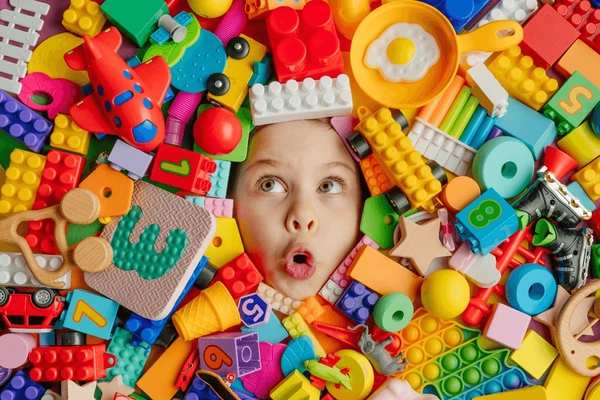

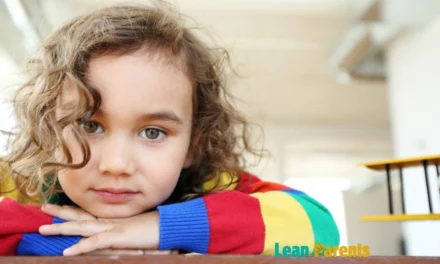
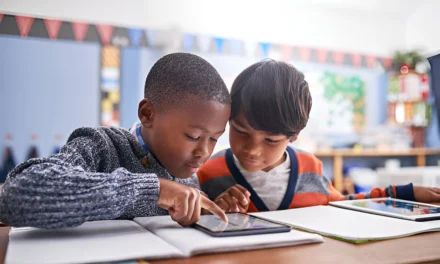
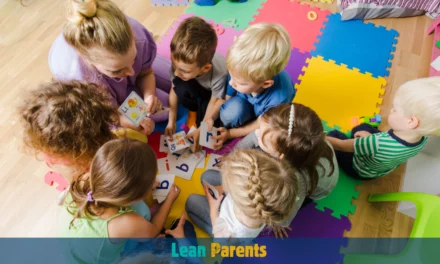
I truly wanted to post a small message to be able to thank you for those unique steps you are showing at this site. My particularly long internet lookup has at the end of the day been rewarded with sensible content to exchange with my great friends. I would assert that we site visitors actually are unquestionably blessed to live in a decent network with very many marvellous individuals with helpful solutions. I feel extremely fortunate to have encountered the site and look forward to so many more brilliant moments reading here. Thanks a lot once more for a lot of things.
Yet another thing to mention is that an online business administration diploma is designed for individuals to be able to well proceed to bachelors degree courses. The 90 credit diploma meets the lower bachelor college degree requirements then when you earn your associate of arts in BA online, you will get access to the most recent technologies in such a field. Some reasons why students want to get their associate degree in business is because they are interested in the field and want to obtain the general education and learning necessary prior to jumping to a bachelor diploma program. Thanks alot : ) for the tips you provide in your blog.
I’m not sure exactly why but this weblog is loading very slow for me. Is anyone else having this problem or is it a problem on my end? I’ll check back later on and see if the problem still exists.